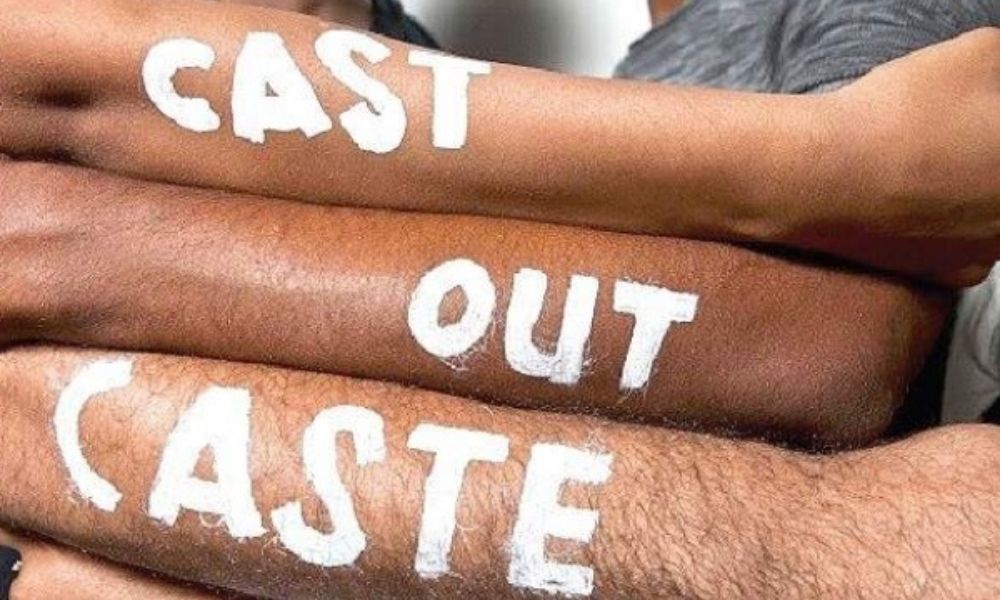
Image Credit: The New Indian Express (Representation Image)
Why Is Caste Still A Divisive Issue In The 21st Century?
India, 30 July 2021 5:02 AM GMT | Updated 30 July 2021 5:08 AM GMT
Editor : Madhusree Goswami |
A mountain girl trying to make it big in the city. She loves to travel and explore and hence keen on doing on-ground stories. Giving the crux of the matter through her editing skills is her way to pay back the journalism its due credit.
Creatives : Ratika Rana
Her primary objective is to inform, promote, educate and cultivate readers through writing.
India refuses to get rid of the deeply embedded 3,000-year-old caste system that has eaten away the rights of so many communities. Caste-based violence is still rampant in many parts of the country.
Even though we are in the 21st century, caste is still a divisive issue in India. From people in Haryana demanding reservation based on their caste to those in Maharashtra demanding a Maratha quota, India has not been able to uproot the caste-based notions that have been handed down generations. Among Hindus, researchers believe that caste has been differentiating between people based on their birth and work for more than 3,000 years now. The concept of 'Jaati' meaning 'birth' underlines this differentiation into thousands of groups and sub-groups based on lineage and kinship.
The History Of India's Caste System
In India, people who follow Hinduism are the majority. Based on the caste system, Hindus are are divided into four classes based on their 'varnas', the literal meaning of 'colour'. According to popular belief, all these four 'varnas' are carved out of different body parts of 'Lord Brahma'. The scriptures describe Lord Brahma as the creator of the world. Among the four varnas, the Brahmins are the priestly class. They are the intellectuals responsible for imparting education and conducting religious ceremonies like marriages. They are the topmost in the hierarchy and are believed to have been made from Lord Brahma's head. The second in line is the 'Kshatriyas' or the warrior class. In olden times, all the kings were believed to be Kshatriyas and had the primary responsibility of defending their territory and maintaining peace and harmony between their people. This class was born out of Lord Brahma's arms, which signifies power and strength. 'Vaishyas' were the third in the hierarchy and were believed to be carved out of Lord Brahma's thighs. Trade and commerce mainly engaged this class. The last spot of this hierarchal pyramid is given to the 'Shudras'. They are believed to have been born out of the creator's feet. People belonging to the Shudra community are associated with manual work in most cases. Though the caste system had strictly divided the population into categories, one more section of people is not even considered. They belong to the Dalit class.
The Indian caste system is perhaps the most extended surviving social system. In the excluded category falls a set of people called 'Dalits' or the untouchables. The yellow pages of history have recorded the harassment faced by Dalits. The community members were not allowed to enter temples, draw water from the same wells as higher caste Hindus, and their touch or even shadow was considered a bad omen. This caste system solidified further during the British Raj when only higher caste Hindus were appointed in administrative positions. However, after Independence, the leaders recognised the need to abolish it for integrated social development of the country. In 1950, the practice of 'untouchability was abolished from the Constitution, which guaranteed the Right to Equality as a fundamental right to all country citizens. However, it requires time and extensive awareness programmes for legal changes to seep down into the heavily stratified social dimensions of the country.
Decades post-independence, one can find India's diversity and caste prevalence as parallel realities. In the 21st century, caste still acts as a source of self-esteem, satisfaction and contentment. In the developing India that we are living in, we are happy to put our shortcomings under the carpet and project a happy picture. Most of the people engaged in manual scavenging in the country belong to the Dalit community. The community's members are still associated with dirty menial work, like cleaning human faeces with their own hands and this is often a dangerous job as they risk severe gas poisoning. The life expectancy of such workers is only 40-45 years due to ue to multiple health issues, including hepatitis, cholera, meningitis, typhoid and cardio-vascular problems.
Inter-caste marriages are still not accepted in certain sections of the so-called educated citizens of the country. Among the 121 crore Indians, are 200 million Dalits that face violence, harassment, and exclusion daily. A report by Human Rights Watch mentioned that 'discriminatory and cruel, inhuman and degrading treatment of more than 165 million people has been justified based on caste in India'.
Violence against them is still rampant and often makes headlines in the country.
Pendency Rate Of Cases Involving SC/ST were 94%
Nine states in India that house more than 54 per cent of Dalits have recorded more than 84 per cent of caste-based violence against the Scheduled Castes (SCs). The highest rates of violence were recorded in Rajasthan, Madhya Pradesh, Bihar and Gujrat. The statistics show that the states that experience violence above the national average are Uttar Pradesh, Kerala, Odisha and Andhra Pradesh. The menace lies not just in causing violence but also in addressing it. The National Crime Records Bureau (NCRB) data shows that the conviction rate in cases related to SC/ST is a mere 32 per cent, whereas the pendency of the cases is a staggering 94 per cent. From 2009 to 2018, the atrocities on marginalised castes has increased by 6 per cent. Some experts say that the crippling caste system in the country would have disappeared if not for the politicians.
The most painful part of the study 'Quest for Justice' by the National Dalit Movement for Justice (NDMJ) showed that Dalit women are receiving most caste-based atrocities. The Hathras gangrape case is one of the most recent examples of caste-based violence against women. The public outcry regarding the funeral of the victim in the dead of night was reported by several media houses. Despite rape being a heinous crime in itself, the caste angle of the case cannot be ruled out. While girls and women from all castes become a target of sexual violence, ignoring the caste dynamics when they are facing you is equivalent to ignoring reality.
The prevalence of caste in Indian society in the 21st century might not be talked about as much, however that does not compensate for the fact that the influence is still running strong. What started as a part of one religion has spilled to other faiths. Christians, Muslims and Sikhs now employ similar social stratification. As a country, India must destroy the caste system before the caste system destroys India.
Also Read: Village In Uttar Pradesh Opens Gymnasium Only For Women
 All section
All section














